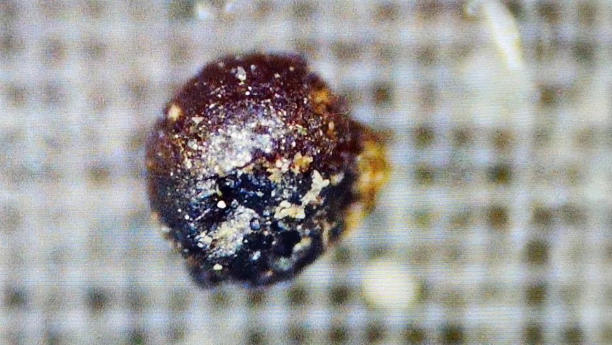Total Pageviews
Tuesday, 28 November 2023
Monday, 27 November 2023
Sunday, 26 November 2023
Friday, 24 November 2023
1816 and 1828...a couple of accounts
Thursday, 23 November 2023
Wednesday, 22 November 2023
Am I Joining The Debunkers? What??
I was asked why I do not join the current crop of "debunkers" on You Tube and online?
No. In any serious area of investigation and research the term "debunker" is a dirty word and debunkers are people who will try to explain every and anything away even if it means twisting facts and outright lyi8ng and faking 'evidence' to prove their point.
I am a skeptic. Totally different and after decades of dealing with debunkers I will never join anything where people call themselves a "debunking community".
Monday, 20 November 2023
Friday, 17 November 2023
'Alien' spherules dredged from the Pacific are probably just industrial pollution, new studies suggest
Microscopic metallic spheres recovered from the Pacific Ocean are likely the result of manmade industrial pollution — rather than pieces of an interstellar meteor — according to
several new studies.
Last summer, Harvard astrophysicist and extraterrestrial hunter Avi Loeb declared that several tiny, metallic balls dredged up from the bottom of the ocean were likely remnants from an interstellar meteorite, and could even contain signatures of alien technology. Now, independent analysis suggests the spheres have a much less distant origin: They are more likely a by-product from burning coal on Earth.
Loeb and his colleagues found the micrometer-sized spherules during an expedition off the coast of Papua New Guinea in search of fragments of a meteor that streaked through the atmosphere in 2014.
Based on the meteor's recorded speed, Loeb and his team said that it was likely interstellar in origin — and that it must have left debris in its wake. The dredged-up spheres, they suggested, are that debris, as their composition is different to that of most meteorites.
In several blog posts and a non-peer-reviewed paper posted to the preprint database arXiv, Loeb described the various "anomalous" properties of the metallic pellets. He zeroed in on five spherules in particular that contained a high percentage of beryllium, lanthanum and uranium. Loeb dubbed these five "BeLaU spherules". He and others have since speculated that the weird spheres might be evidence of alien technology.
But many scientists unrelated to the research took issue with these claims at the time — and now, several newly-published studies poke additional holes in the supposed extraterrestrial origins of the spherules.
Interstellar rock, or manmade pollution?
First, there is some debate as to whether or not the meteor in question was actually interstellar. It was only recorded by U.S. military equipment, and some researchers say that it's possible the sensors made a mistake when recording its speed, according to a new non-peer-reviewed paper posted to arXiv on Nov. 13. However, even if the meteor's speed was correctly recorded, odds are low that any significant pieces of it would survive the fall through the atmosphere.
"If interstellar, practically none of the 2014-01-08 bolide would have survived entry," the authors of the new study — professors Steven Desch of Arizona State University and Alan Jackson of Towson University — wrote. "If it were traveling at the speeds that were reported (and necessary to be interstellar), then at least 99.8%, and probably > 99.9999% of it would have vaporized in the atmosphere, leaving insignificant quantities to be deposited on the seafloor."
Then, there's the issue of proving the spheres came from that particular meteor. Scientists don't know where or even whether the 2014 meteor landed; it would be extremely difficult to find tiny pieces of that exact specimen by searching the ocean within a 30-mile (48 kilometers) radius nearly 10 years after it appeared. On the other hand, little metal balls are ubiquitous on the seafloor. Some are micrometeorites shed by passing space rocks, but others are spewed out by volcanoes or produced by industrial activity. These naturally collect at the bottom of the ocean over time.
Finally, there is the question of the spheres' makeup. If you start from the assumption that these particular pellets originated in space, then their composition does indeed seem unusual. However, as a recent paper published Oct. 23 in the journal Research Notes of the AAS points out, they match the profile of coal ash contaminants. Study author Patricio Gallardo, an astronomer at the University of Chicago, wrote that, because of this, "the meteoritic origin is disfavored."
Is it still possible that the spherules came from somewhere outside our solar system? Yes. But, based on the available evidence, it appears far more likely that they originated much closer to home, the new papers suggest. As NASA astrobiologist Caleb Scharf wrote on X, formerly known as Twitter, "Well, they did indeed discover evidence of a technological civilization…right here on Earth."
Loeb refutes critics
Loeb responded to these criticisms in a Nov. 15 blog post on Medium, arguing that the new papers cannot adequately assess the composition of the spherules without studying them directly.
He went on to quote team member Jim Lem of the Papua New Guinea University of Technology, writing: "The region where the expedition was carried, should have no coal mineralization. In addition, coal is non-magnetic and cannot be picked up by the magnetic sled that was used."
Loeb added that 93% of the collected samples have yet to be analyzed, cautioning critics not to jump to conclusions about their origins until all the data is in. To make definitive claims about the spherules' nature before they are properly analyzed in a peer-reviewed study would be "unprofessional," Loeb said.




